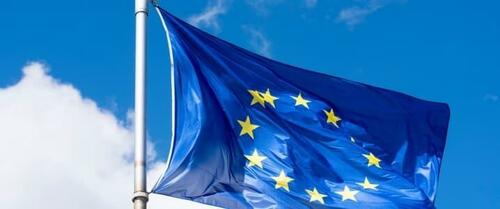
Authored by Charles Kennedy via OilPrice.com,
The European Commission is expected to unveil in February a new industrial alliance on small modular reactors (SMRs), aiming to deploy the first small nuclear projects in Europe early next decade.
SMRs are advanced nuclear reactors that have a power capacity of up to 300 MW(e) per unit, which is about one-third of the generating capacity of traditional nuclear power reactors, according to the International Atomic Energy Agency (IAEA). SMRs offer savings in cost and construction time, and they can be deployed incrementally to match increasing energy demand, the agency says.
The EU and other developed economies are looking to boost nuclear power generation to meet their ambitious climate goals.
The EU seeks to establish a European Industrial Alliance on SMRs as the bloc is witnessing “a renewed interest in nuclear energy and in its potential to address all the main challenges at hand: decarbonisation, security of power supply and EU's strategic autonomy,” European Commissioner for Energy, Kadri Simson, said in November at an industry event.
“Successful deployment of SMRs must take place by the next decade in order to provide a significant contribution to our path to climate neutrality by 2050,” Simson said.
The Commission has now drafted a European Industrial Alliance, whose objective “is to facilitate and accelerate the development, demonstration, and deployment of the first SMRs projects in Europe in the early 2030s,” according to a draft declaration Bloomberg News has seen.
SMRs could be a “key contribution” to the EU’s new goal to cut greenhouse gas emissions by 90% by 2040, according to the draft.
The comeback of nuclear power in many countries is expected to drive a record-high electricity generation from nuclear in 2025, the International Energy Agency (IEA) said in a report earlier this week.
By next year, global nuclear generation is forecast to exceed its previous record set in 2021, the IEA said in its Electricity 2024 report.
After the energy crisis of 2022, many governments – with the notable exception of Germany – have opted to boost their nuclear power generation to ensure energy security and reduce emissions from electricity generation as they aim to reach net-zero emissions by 2050.
Authored by Charles Kennedy via OilPrice.com,
The European Commission is expected to unveil in February a new industrial alliance on small modular reactors (SMRs), aiming to deploy the first small nuclear projects in Europe early next decade.
SMRs are advanced nuclear reactors that have a power capacity of up to 300 MW(e) per unit, which is about one-third of the generating capacity of traditional nuclear power reactors, according to the International Atomic Energy Agency (IAEA). SMRs offer savings in cost and construction time, and they can be deployed incrementally to match increasing energy demand, the agency says.
The EU and other developed economies are looking to boost nuclear power generation to meet their ambitious climate goals.
The EU seeks to establish a European Industrial Alliance on SMRs as the bloc is witnessing “a renewed interest in nuclear energy and in its potential to address all the main challenges at hand: decarbonisation, security of power supply and EU’s strategic autonomy,” European Commissioner for Energy, Kadri Simson, said in November at an industry event.
“Successful deployment of SMRs must take place by the next decade in order to provide a significant contribution to our path to climate neutrality by 2050,” Simson said.
The Commission has now drafted a European Industrial Alliance, whose objective “is to facilitate and accelerate the development, demonstration, and deployment of the first SMRs projects in Europe in the early 2030s,” according to a draft declaration Bloomberg News has seen.
SMRs could be a “key contribution” to the EU’s new goal to cut greenhouse gas emissions by 90% by 2040, according to the draft.
The comeback of nuclear power in many countries is expected to drive a record-high electricity generation from nuclear in 2025, the International Energy Agency (IEA) said in a report earlier this week.
By next year, global nuclear generation is forecast to exceed its previous record set in 2021, the IEA said in its Electricity 2024 report.
After the energy crisis of 2022, many governments – with the notable exception of Germany – have opted to boost their nuclear power generation to ensure energy security and reduce emissions from electricity generation as they aim to reach net-zero emissions by 2050.
Loading…





